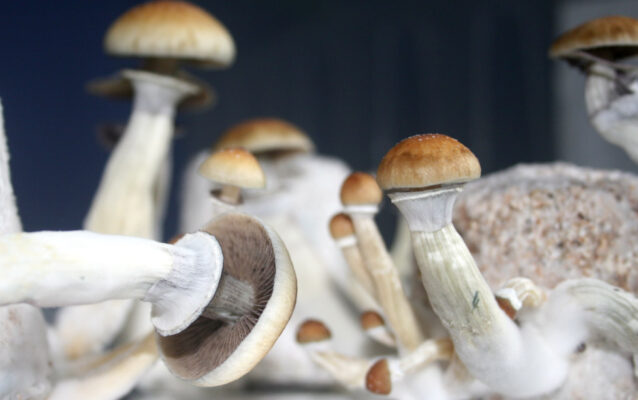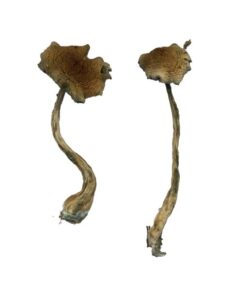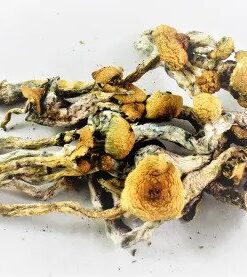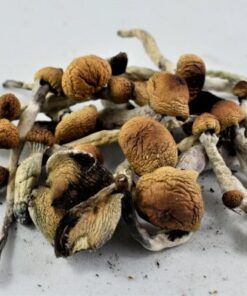Burmese (Psilocybe Cubensis) – Psychedelic Mushrooms
$25.00 – $460.00
Psilocybe cubensis, commonly known as the magic mushroom, shroom, golden halo, cube, or gold cap, is a species of psilocybin mushroom of moderate potency whose principal active compounds are psilocybin and psilocin. It belongs to the fungus family Hymenogastraceae and was previously known as Stropharia cubensis. It is the best-known psilocybin mushroom due to its wide distribution and ease of cultivation. This mushroom being optimal for home cultivation specifically, as was suggested in the 1970s, is primarily what led to P. cubensis being the psilocybin mushroom species most common on the black market as a street drug. Buy Burmese magic Mushrooms online.
Psilocybe cubensis, commonly known as the magic mushroom, shroom, golden halo, cube, or gold cap, is a species of psilocybin mushroom of moderate potency whose principal active compounds are psilocybin and psilocin. It belongs to the fungus family Hymenogastraceae and was previously known as Stropharia cubensis. It is the best-known psilocybin mushroom due to its wide distribution and ease of cultivation. This mushroom being optimal for home cultivation specifically, as was suggested in the 1970s, is primarily what led to P. cubensis being the psilocybin mushroom species most common on the black market as a street drug. Buy Burmese magic Mushrooms online.
Psilocybe Cubensis Taxonomy
The species was first described in 1906 as Stropharia cubensis by American mycologist Franklin Sumner Earle in Cuba. In 1907, it was identified as Naematoloma caerulescens in Tonkin (now northern Vietnam) by French pharmacist and mycologist Narcisse Théophile Patouillard, while in 1941, it was called Stropharia cyanescens by William Alphonso Murrill near Gainesville in Florida. German-born mycologist Rolf Singer moved the species into the genus Psilocybe in 1949, giving it the binomial name Psilocybe cubensis. The synonyms were later also assigned to the species Psilocybe cubensis. Burmese magic Mushrooms for sale
Psilocybe Cubensis BENEFITS
Get the ultimate sensation from Psilocybe Cubensis
The Relaxation Benefits From Psychedelic Mushrooms Will Help You Get A Better Perspective
Burmese Cubensis is a powerful psychedelic mushrooms strain that can produce hallucination-like sensations. It’s the most intense out of all known psychedelic mushrooms and may lead you into an incredible journey with great relaxation, powerful feelings, or visual experiences. This can help with mental and physical conditions, such as stress, anxiety, PTSD, pain, and more. Newcomers should use extreme caution when using this substance because its impacts might be quite overwhelming. Ingest the dried mushrooms by mixing them with chocolate, food, capsules, or edibles to dose effectively.
Distribution and habitat Psilocybe Cubensis
Psilocybe cubensis is a pan-tropical species, occurring in the Gulf Coast states and southeastern United States, Mexico, in the Central American countries of Belize, Costa Rica, Panamá, El Salvador and Guatemala, the Caribbean countries Cuba, the Dominican Republic, Guadalupe, Martinique, and Trinidad, in the South American countries of Argentina, Bolivia, Brazil, Colombia, French Guiana, Paraguay, Uruguay and Peru, Southeast Asia, including Thailand, Vietnam, Cambodia and Malaysia, India, Australia, Fiji, and possibly Nepal and Hawaii.
Psychedelic and entheogenic use

Singer noted that Psilocybe cubensis had psychoactive properties in 1949.
In Australia, the use of psychoactive mushrooms grew rapidly between 1969 and 1975.
In a 1992 paper, locals and tourists in Thailand were reported to consume P. cubensis and related species in mushroom omelets—particularly in Ko Samui and Ko Pha-ngan. At times, omelets were adulterated with LSD, resulting in prolonged intoxication. A thriving subculture had developed in the region. Other localities, such as Hat Yai, Ko Samet, and Chiang Mai, also had some reported usage.
In 1996, jars of honey containing Psilocybe cubensis were confiscated at the Dutch-German border. Upon examination, it was revealed that jars of honey containing psychedelic mushrooms were being sold at Dutch coffee shops.
P. cubensis is probably the most widely known of the psilocybin-containing mushrooms used for triggering psychedelic experiences after ingestion. Its major psychoactive compounds are:
- Psilocybin (4-phosphoryloxy-N,N-dimethyltryptamine)
- Psilocin (4-hydroxy-N,N-dimethyltryptamine)
- Baeocystin (4-phosphoryloxy-N-methyltryptamine)
- Norbaeocystin (4-phosphoryloxytryptamine)
- Aeruginascin (N,N,N-trimethyl-4-phosphoryloxytryptamine)
The concentrations of psilocin and psilocybin, as determined by high-performance liquid chromatography, are in the range of 0.14–0.42% (wet weight) and 0.37–1.30% (dry weight) in the whole mushroom 0.17–0.78% (wet weight) and 0.44–1.35% (dry weight) in the cap, and 0.09%–0.30% (wet weight) and 0.05–1.27% (dry weight) in the stem, respectively. For quickly and practically measuring the psychoactive contents of most healthy Psilocybe cubensis varieties, it can generally be assumed that there is approximately 15 mg (+/- 5 mg) of psilocybin per gram of dried mushroom. Furthermore, due to factors such as age and storage method, the psilocybin and psilocin content of a given sample of mushrooms will vary.
| Quantity | 1 gram, 3 grams, 7 grams, 14 grams, 28 grams (1 Oz) |
|---|
Be the first to review “Burmese (Psilocybe Cubensis) – Psychedelic Mushrooms” Cancel reply
Related products
PSILOCYBIN MUSHROOM
PSILOCYBIN MUSHROOM
PSILOCYBIN MUSHROOM
PSILOCYBIN MUSHROOM
PSILOCYBIN MUSHROOM
PSILOCYBIN MUSHROOM
PSILOCYBIN MUSHROOM
PSILOCYBIN MUSHROOM



















Reviews
There are no reviews yet.